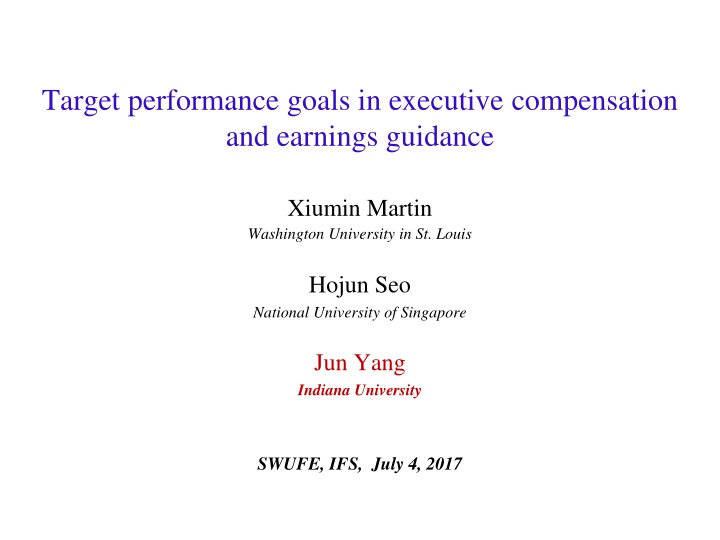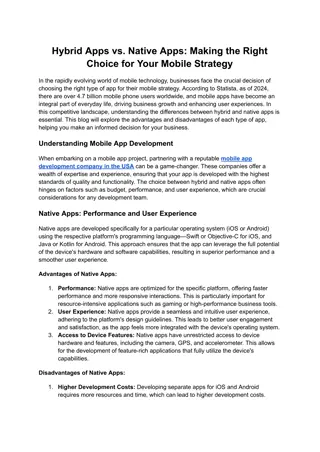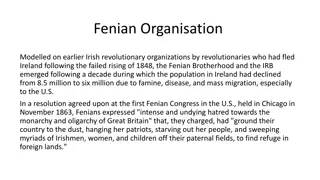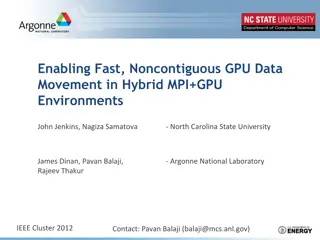Realize Your Hybrid Ambitions: The Data Center of the Future Today
Evolving cloud requirements for hyperscalers, the second wave of clouds handling additional services, artificial intelligence and machine learning driving the next wave, and building for future hyperscale requirements at the epicenter of real estate and technology. Challenges and solutions for integrating data into daily life and meeting high-performance connectivity demands are discussed with insights into the evolving data center landscape.
Download Presentation

Please find below an Image/Link to download the presentation.
The content on the website is provided AS IS for your information and personal use only. It may not be sold, licensed, or shared on other websites without obtaining consent from the author.If you encounter any issues during the download, it is possible that the publisher has removed the file from their server.
You are allowed to download the files provided on this website for personal or commercial use, subject to the condition that they are used lawfully. All files are the property of their respective owners.
The content on the website is provided AS IS for your information and personal use only. It may not be sold, licensed, or shared on other websites without obtaining consent from the author.
E N D
Presentation Transcript
Target performance goals in executive compensation and earnings guidance Xiumin Martin Washington University in St. Louis Hojun Seo National University of Singapore Jun Yang Indiana University SWUFE, IFS, July 4, 2017
Annual Incentive Plans Annual Incentive Plans (AIP) are designed to improve short-term performance. Performance metric for AIP is typically determined in the first 90 days of a fiscal year. To be tax deductible according to the tax rule of 162(m) AIP contains performance measures, the corresponding performance goals, and the structure of pay-for- performance relation. Financial measures: EPS, sales, cash flows, etc. Non-financial measures: safety, customer satisfactions, etc.
Research Question Little is known as to how corporate boards determine performance goals and whether the setting process is influenced by managers. Do compensation committees refer to analyst consensus forecasts when determining CEOs performance goals in AIPs? Do managers issue pessimistic earnings guidance before the compensation committee meetings that determine performance targets in AIPs?
How to Set Performance Targets? Compensation committees may rely on external benchmarks The prevailing consensus analyst forecasts are readily available and relatively unbiased estimates, serving as a reference point Anecdotal evidence suggests analyst expectation is one of the common benchmarks used to set performance goals (Mercer 2009; Burchman and Emanuel 2015) Management earnings guidance affect analyst expectations Lower management guidance lower analyst consensus lower performance target in AIP the target higher likelihood to achieve
What is the Managerial Incentive? Hypothesis: When CEO performance goal is linked to earnings, management earnings guidance is more pessimistic during the period immediately before AIP performance target approval than during other periods. Is such behavior mitigated or exacerbated by shareholder activism (Gillan and Starks 2007; Ertimur, Ferri, and Muslu 2010)?
Literature on Management Forecasts Management forecasts Management forecasts lower information asymmetry between firms and investors (Ajinkya and Gift 1984; Ajinkya, Bhojraj, and Sengupta 2005; ; Hui, Matsunaga, and Morse 2009); Management forecasts affect market expectation on future cash flow, analysts forecast revisions, and stock returns (Ajinkya and Gift 1984; Jennings 1987; Anilowsky, Feng and Skinner 2007); Accurate guidance is rewarded via career-advancement opportunities for the CEO (Zamora 2009; Lee, Matsunaga and Park 2012); CEOs and CFOs affect management earnings forecasts (Bamber, Jiang and Wang 2010); MF may affect personal benefits such as stock-based compensation (Noe 1999; Aboody and Kasznik 2000; Cheng and Lo 2006; Brockman et al. 2008).
Literature on Performance Metrics for AIPs Internal performance metrics are problematic if executives can participate in setting performance standards (Murphy 1999); Benefits of pay-for-performance will be attenuated if managers are given the opportunity to influence performance goals (Anderson, Dekker, and Sedatole 2008); Firms tend to set EPS targets for CEO AIPs below the prevailing consensus earnings to allow CEOs to achieve these performance goals more easily (Kim and Yang 2012).
Data Sample period: 2006 2015 Incentive Lab data S&P 1,500 firms: largest 750 each year based on market cap Collect detailed information regarding compensation structures of Named Executive Officers (NEOs) since 2006 IBES for management guidance, analyst earnings forecasts, and IBES-reported actual earnings Financial data from COMPUSTAT and stock return data from CRSP 11,866 management annual earnings forecasts issued by 477 unique firms with earnings or sales performance targets in AIP.
Sample Construction # Firm-Year (# Firm-MF) EPS w/o REV EPS and REV REV w/o EPS # Firm-Year observations with available EPS and REV targets in AIP # Firm-Year observations with available EPS and REV targets in AIP, management forecasts, and financial data # Firm-MF sample (Panel B, Table 1) Firm-year observations with available EPS targets in AIP, the Event MF, and financial data 3,786 1,720 881 1,185 2,184 1,011 673 500 (11,866) (5,581) (3,649) (2,636) 1,173 632 541 - # Firm-Year sample (Panel C, Table 1)
Summary Statistics: Firm-Year Sample Panel C Descriptive statistics for the Firm-Year Sample Variables Dependent variables EPSTARt Actual less Target Payoutt Independent variables AF before MFt MFt MF Biast AF After MFt EPSTARt-1 Actual EPSt Control variables Sizet-1 Market-to-Bookt-1 ABRETt-1 ROAt-1 EarnVolt-1 Losst-1 Litigation Riskt N Mean Std Q1 Median Q3 1,173 996 6.717 0.138 2.634 0.389 5.272 -0.053 6.376 0.119 7.780 0.333 1,173 1,173 1,173 1,173 848 1,173 7.091 6.790 -0.333 6.942 6.801 6.885 2.871 3.061 0.920 2.441 2.365 2.582 5.447 5.098 -0.368 5.428 5.373 5.349 6.658 6.393 -0.110 6.582 6.534 6.548 8.079 7.814 0.023 7.893 7.784 7.855 1,173 1,173 1,173 1,173 1,173 1,173 1,173 9.015 2.046 0.008 0.077 0.016 0.049 0.242 1.136 1.081 0.107 0.063 0.022 0.215 0.429 8.181 1.307 -0.048 0.037 0.005 - - 8.923 1.706 0.005 0.068 0.009 - - 9.733 2.430 0.067 0.107 0.016 - -
Correlations: Firm-Year Sample (1) - (2) (3) (4) (5) (6) (7) (8) Variables EPSTARt (1) (2) 0.69 AF Before MFt - (3) 0.65 0.90 MFt - (4) -0.16 0.20 MF Biast 0.02 - (5) 0.78 0.90 0.83 AF After MFt -0.05 - (6) -0.13 -0.13 -0.12 -0.10 Actual less Target Payoutt 0.01 - (7) (8) 0.60 0.45 0.46 0.49 EPSTARt-1 Actual EPSt 0.04 -0.01 - 0.64 0.71 0.66 0.83 0.16 0.46 0.03 -
Determinants of the Level of EPS Performance Targets Is the consensus analyst forecast an input in setting EPS performance targets in AIP? EPSTAR Variables AF Before MF (1) (2) - - (3) - - - - (4) (5) - - 0.012 (0.220) 0.778*** (8.496) - - Included Yes 1,173 0.613 F-Stat 4.28 (6) - - - - 0.537*** (6.886) - - - - - - Included Yes 1,173 0.496 -0.086* (-1.688) - - 0.879*** (10.111) - - Included Yes 1,173 0.614 Coeff Diff 0.375 0.459*** (6.472) - - - - Included Yes 1,173 0.473 MF AF After MF 0.790*** (8.204) - - Included Yes 1,173 0.613 0.680*** (5.422) 0.305*** (4.473) Included Yes 848 0.723 p-Value 0.040 EPSTAR t-1 Controls Fixed Effects (Industry, Year) Number of observations Adjusted R squared Coefficient difference tests in column (5) AF After MF = EPS target t-1
Determinants of the Level of EPS Performance Targets EPSTAR: the actual EPS performance target in the AIP, divided by stock price and multiplied by 100; AF before MF: the consensus analyst forecast 3 days before the date of event-window management earnings guidance, scaled by stock price and multiplied by 100; MF: event window management earnings guidance, divided by stock price and multiplied by 100; AF after MF: the consensus analyst forecast 5 days after the date of event-window management earnings guidance, scaled by stock price and multiplied by 100; AF bias: (consensus analyst forecast 3 days before the event-window management forecast actual EPS)/Stock price * 100; Controls: Size, M-B, ABRET, ROA, EarnVol, Loss, Litigation Risk
Effects of Management Forecast Bias on Analyst Forecast Revisions AF Revisiont (2) Variables MF Biast (1) (3) 0.461*** - 0.458*** (11.307) - (10.776) Event EPS Targett - -0.071** 0.002 - (-2.276) (0.081) MF Biast Event EPS Targett - - 0.030 - - (0.778) Other controls Yes Yes Yes Fixed Effects (Firm, Year, FQ) Yes Yes Yes Number of observations 11,624 11,624 11,624 Adjusted R squared 0.616 0.412 0.616
Research Design - MF Biast = Management earnings forecast - the prevailing consensus analyst forecast - Event EPS targett= an indicator variable equal to one for the latest management earnings forecast issued during the event period when EPS target used in AIP is disclosed but the performance revenue target, zero otherwise. We include firm fixed effects, year fixed effects, and fiscal quarter fixed effects.
Main Results Do manager issue pessimistic earnings forecast prior to the approval date of AIP relative to earnings forecasts in other period? MF Bias Independent Variables Event EPS target (1) (2) - - (3) - - - - 0.039 (0.703) Included Yes 11,866 0.374 F-Stat 3.720 1.328 7.034 (4) -0.160*** (-4.011) - - - - Included Yes 11,866 0.375 -0.169*** (-4.072) -0.068 (-1.498) 0.001 (0.021) Included Yes 11,866 0.376 p-Value 0.0544 0.250 0.00827 -0.041 (-0.961) - - Included Yes 11,866 0.374 Coeff Diff -0.101 -0.0695 -0.170 Event EPS REV target Event REV target Controls Fixed Effects (Firm, Year, Fiscal Quarter) Number of observations Adjusted R squared Coefficient difference tests in col. (4) 1 (Event EPS target) = 2 (Event EPS REV target) 2 (Event EPS REV target) = 3 (Event REV target) 1 (Event EPS target) = 3 (Event REV target) MF in the event period is .16% lower proportional to stock price relative to other MF. This represent 19.7% of STD of the MF Biast variable, roughly 4% of EPS. No bias when performance target is linked to revenue only.
Panel B AIPs and long-term incentive plans (LTIPs) MF Bias Independent Variables (1) (2) AIP with equity grants -0.167*** (-3.730) -0.049 (-1.191) -0.001 (-0.016) AIP only Event EPS target -0.203** (-2.117) -0.157 (-0.973) 0.039 (0.294) Event EPS REV target Event REV target Controls Fixed Effects (Firm, Year, Fiscal Quarter) Number of observations Adjusted R squared Coefficient difference between col. (1) and col. (2) Event EPS target Event EPS REV target Event REV target Included Yes 9,690 0.388 Included Yes 2,172 0.377 Coeff. Diff. p-Value -0.036 -0.109 0.040 0.736 0.513 0.788
Panel C The effect of AIPs on management forecast bias before 2006 MF Bias Variables Assigned Event EPS target (1) 0.041 (0.386) (2) - - (3) - - (4) 0.107 (0.968) Assigned Event EPS REV target - 0.377 - 0.428 - - - (0.955) - - - (1.070) 0.195 (1.491) 0.135 (1.032) Assigned Event REV target Controls Fixed Effects (Firm, Year, Fiscal Quarter) Number of observations Adjusted R squared Included Included Included Included Yes Yes Yes Yes 5,570 0.815 5,570 0.815 5,570 0.815 5,570 0.815
Panel D The effect of AIPs on alternative management forecast bias Alternative MF Bias (2) - - 0.006 (0.087) - - Variables Event EPS target (1) (3) - - - - (4) -0.050 (-0.721) - - - - -0.022 (-0.292) 0.023 (0.304) 0.103 (1.583) Event EPS REV target 0.101* (1.901) Event REV target Controls Fixed Effects (Firm, Year, Fiscal Quarter) Number of observations Adjusted R squared Included Included Included Included Yes Yes Yes Yes 5,570 0.815 5,570 0.815 5,570 0.815 5,570 0.815 Alternative annual earnings forecasts: the sum of quarterly earnings forecasts for four quarters ending with three alternative fiscal year end other than the actual fiscal year end.
Cross-sectional Variations: Heterogeneous Managerial Incentives Managers issue more pessimistic earnings forecasts in the event period when The prevailing consensus analyst forecasts is more optimistic; Target amount of AIP is larger; EPS target in AIP was missed in the previous year.
Cross-Sectional Variation: Analyst Forecast Optimism Do manager issue more pessimistic earnings forecast in the event period when the prevailing consensus analyst forecasts is more optimistic? MF Bias Variables (1) (2) Actual EPS 0.047 (1.251) -0.061** (-2.432) -0.432*** (-6.636) Projected EPS -0.097* (-1.762) 0.036 (1.467) -0.157** (-2.202) Event EPS target AF Bias Event EPS target AF Bias Controls Fixed Effects (Firm, Year, Fiscal Quarter) Number of observations Adjusted R squared Included Included Yes Yes 9,206 0.399 9,187 0.391
Cross-sectional Variation: Target Bonus Payout Do manager issue more pessimistic earnings forecast in the event period if the target bonus amount is greater? MF Bias (1) -0.052 (-1.214) -0.016 (-0.703) -0.240*** (-3.464) Variables Event EPS target Bonus Target Amount Event EPS target Bonus Target Amount Controls Fixed Effects (Firm, Year, Fiscal Quarter) Number of observations Adjusted R squared Included Yes 11,866 0.376
Cross-sectional Variation: Missing AIP Performance Target Last Year Do manager issue more pessimistic earnings forecast in the event period if the EPS target was missed last year? MF Bias (1) -0.107** (-2.580) 0.008 (0.193) -0.220** (-2.448) Variables Event EPS target Miss EPS target t-1 Event EPS target Miss EPS target t-1 Controls Fixed Effects (Firm, Year, Fiscal Quarter) Number of observations Adjusted R squared Included Yes 6,963 0.402
Cross-sectional Variations: Shareholder Activism Managers issue more pessimistic earnings forecasts in the event period at firms with Higher concentration of institutional ownership; Larger ownership by dedicated institutional investors; Larger ownership by institutions with higher standard of prudence (pensions, endowment, and banks); Greater shareholder unhappiness about compensation practice (shareholder proposals on compensation-related issues receive 30%+ support).
Cross-sectional Variation: Shareholder Activism MF Biast Variables Event EPS Targett (1) (2) (3) (4) -0.072 (-1.639) -0.000 (-0.009) -0.181** (-2.382) - - - - - - - - - - - - -0.093* (-1.734) - - - - -0.014 (-0.353) -0.144* (-1.687) - - - - - - - - -0.077* (-1.679) - - - - - - - - 0.014 (0.456) -0.163** (-2.196) - - - - -0.146*** (-3.533) - - - - - - - - - - - - 0.033 (0.690) -0.229* (-1.814) High INST TOP5t-1 Event EPS Targett High INST TOP5t-1 High INST DEDt-1 Event EPS Targett High INST DEDt-1 High INST PNEBt-1 Event EPS Targett High INST PNEBt-1 Shareholder Proposalt-1 Event EPS Targett Shareholder Proposalt-1 Controls Fixed Effects (Firm, Year, FQ) Number of observations Adjusted R squared Included Yes 11,866 0.376 Included Yes 9,225 0.428 Included Yes 9,225 0.428 Included Yes 11,866 0.376
The Effect of Managerial Forecast and Performance Targets on Ex-post Payout Do managers benefit from issuing pessimistic earnings forecasts? Yes. A one-standard-deviation decrease in the event- window management forecast bias is associated with a 4% increase in actual less target payout, which is equivalent to $117,000.
Ex-Post Bonus Payout Actual less Target Payoutt (2) -0.063*** (-6.029) -0.043** (-2.478) (-1.520) - -0.117*** - (-7.746) - - 0.076*** 0.116*** (8.097) (-0.344) (-0.166) Included Included Yes 996 0.186 Variables AF Before MFt (1) (3) - - - - MF Biast -0.025 -0.004 (-0.244) - - -0.047*** (-5.446) 0.058*** (5.966) (-0.095) Included Yes 996 0.154 AF After MFt - - EPSTARt Actual EPSt (9.207) Controls Fixed Effects (Industry, Year) Number of observations Adjusted R squared Yes 996 0.233
Conclusion Corporate boards rely on external benchmarks to determine the performance goals in CEO bonus plans. Managers opportunistically issue earnings guidance to influence the performance target setting process. Shareholder activism exacerbates the pressure for corporate boards to rely on external benchmarks, which motivates management to guide earnings downward.























